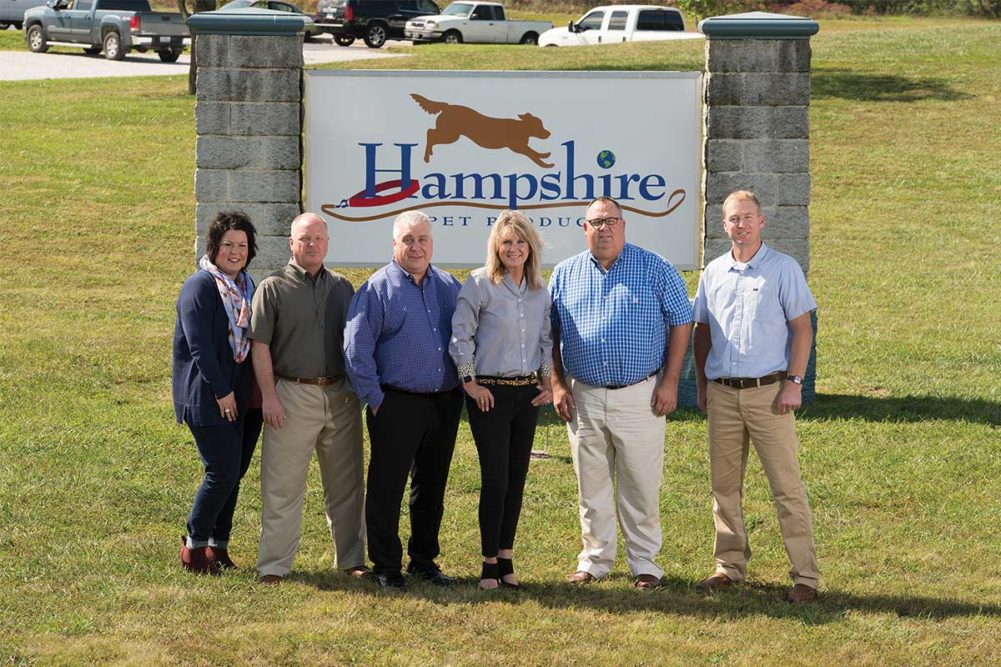Founded in 2001, Hampshire Pet Products in Joplin, Missouri, is a co-manufacturer of baked and cold-extruded pet treats primarily for dogs. In 2014, the company — in conjunction with its customers — succeeded in placing 101 new products on retail shelves. Today, Hampshire averages between 40 and 60 new products per year.
President Julie Larson says one key to Hampshire’s success has been committing to only those projects that support Hampshire’s growth as well as its customers’ growth. “When we started the business, customers would call and ask if we could do something and we would say ‘yes.’ We found that we were saying ‘yes’ not always at the right time for us. In 2005, we changed our strategic thinking that put us on a growth path. We continue to want to provide services and products that are unique to the industry, but it needs to be a successful venture for both Hampshire and the customer.” Larson explains a new venture that works for Hampshire is one that allows the business to grow; is a product line or style of treat the company can sustain; is something employees can do repeatedly at a success rate that meets the customers’ expectations; and its cost implications are favorable to both Hampshire and its customer.
One project that may not have met all of those criteria is a good example, however, of how flexible, innovative and responsive the Hampshire team can be. To celebrate Hampshire’s 10th anniversary, the company successfully established a mark recognized by the Guinness World Records for the largest dog biscuit. The company’s winning entry weighed an impressive 617 lbs., beating the previous record by nearly 400 lbs.
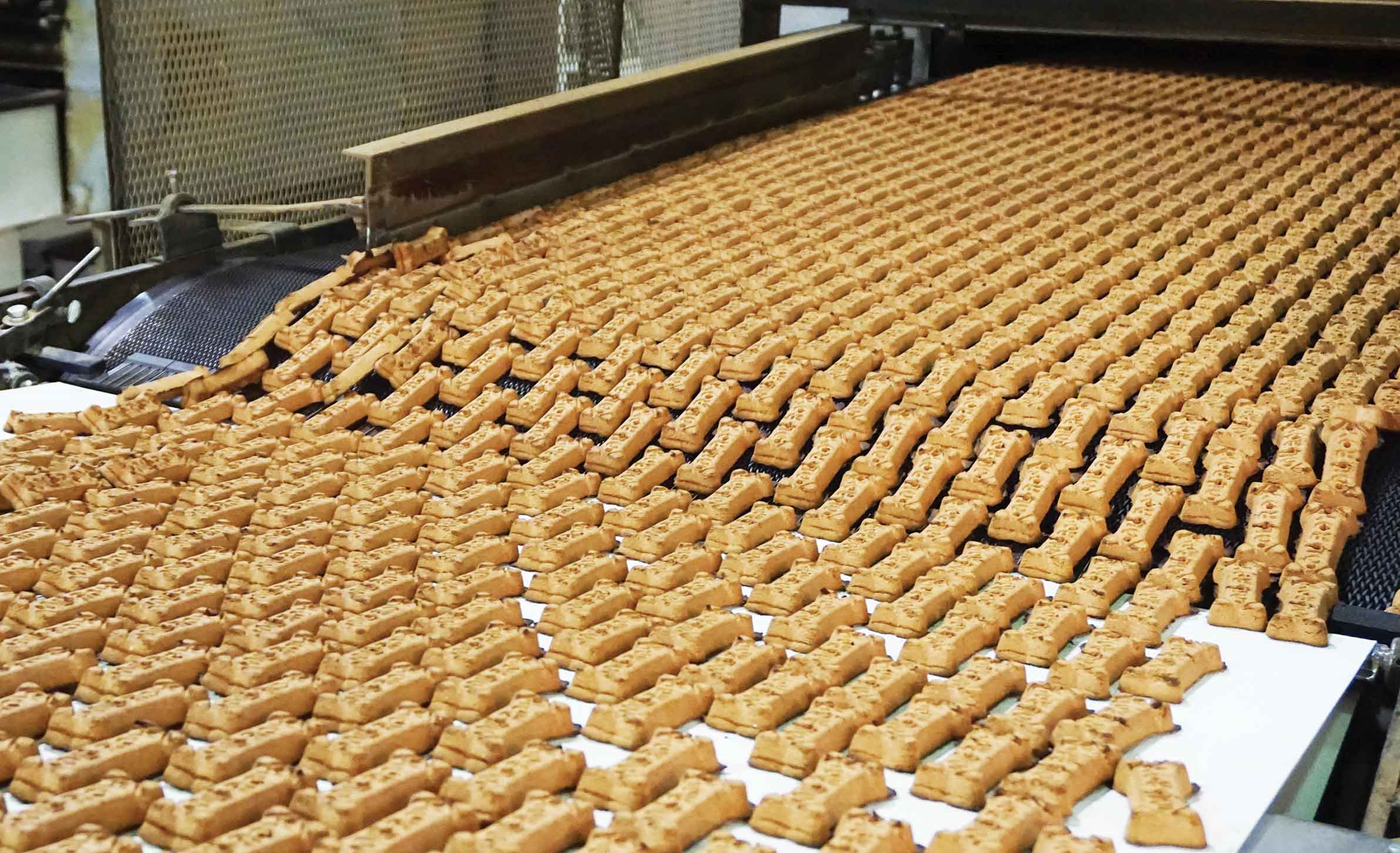
Flexible and fast
World records aside, an important aspect of the company’s strategy to select projects that work well with the co-manufacturer’s capabilities is to be proactive and propose new product ideas and formats to customers, rather than waiting for customers to initiate new product development. This focus on R&D is how the company, in partnership with its customers, averages as many as 60 new product launches per year. Todd Dunlop, director of research development and quality assurance, says one reason Hampshire can get so many products to market in a single year is because the company’s decision-making team is small and agile.
Pet Food Processing sat down with the six-person management team to learn more about the company and its manufacturing process. At the table were Larson, Dunlop, Bob Weaver, chief financial officer, Curt Dudley, vice president of sales, Stormy Ray, human resources manager, and Derek Hill, plant manager.
“Our size makes us more flexible and quicker to market,” Dunlop says. “Everyone we need on board for a new product concept is sitting in this room, these six people.” From product brief, to executables, to nutritional profile, formulation, samples, packaging and marketability analysis, Hampshire can get a product to market in 12 to 16 weeks.
Another secret weapon in product development is the company’s test facility. “We now have our own internal R&D test kitchen, so we can test new products in house with the customer’s help or without the customer’s help,” Dudley says. “Todd and his team can do small batch test runs for test feedings, analyticals, whatever they need to evaluate. With the test kitchen, we can get to a finished product much more quickly.”
“We designed our pilot plant to mimic what we had in regular production but on a smaller scale. By offering this service, we can now run a 50-lb. test batch.” Julie Larson, president, Hampshire Pet Products
Prior to having an in-house R&D facility, the smallest test-batch size Hampshire was able to run was around 2,000 lbs. Now, Hampshire can run test batches as small as 50 lbs. “Before, when a customer wanted to try a new formula or product, the cost impact to both our customer and our business was very large because we’d have to take down one of our systems,” Larson explains. “We designed our pilot plant to mimic what we had in regular production but on a smaller scale. By offering this service, we can now run a 50-lb. test batch. If, as a result of that test batch, the customer wants more green flecks or to see a larger particle size of an ingredient, we can make those changes quickly.”
With 375 ingredients in stock, Hampshire can be flexible in the creative process, but it’s not just the formulation that is critical. Product shape is especially important with rotary-molded treats. Larson says the company has a lot of internal expertise in designing the right shape to fit the formula, which is an important part of processing effectively and getting desired results in the finished treat. Larson says Baker Perkins, Grand Rapids, Michigan, is a key part of this process. “They have been a partner with Hampshire since we started the business and they understand what it is that we actually need from a die roll and from a rotary moulder,” Larson explains. “They’re quick to address our needs and they’ve offered competitive pricing for our customers. Most of our customers purchase their own die rolls. We’re the intermediary in that and Baker Perkins has really taken good care of our customers as well as Hampshire.”
A dog’s best friend
Hampshire primarily produces dog treats, both baked and cold-extruded. The company also manufactures full feeding dog diets, small animal diets and treats, and in the past has made cat food and cat treats but doesn’t currently. “When we started the business, our plan was to produce the standard stock, private-label, hard, crunchy-style dog biscuits,” Larson says. “We quickly found out that in order to gain new market share and grow the business, we had to do something new and different. We were one of the very first producers of no corn, no wheat, no soy. We had to learn how to replace the standard wheat formulas with other based grains that could withstand the baking process. We had to learn about gelatinization and how to make the treats withstand transfer through the process and to gain the durability they needed without the binder that everybody was using at the time and create new treats in a new format. That was a big step for us.”
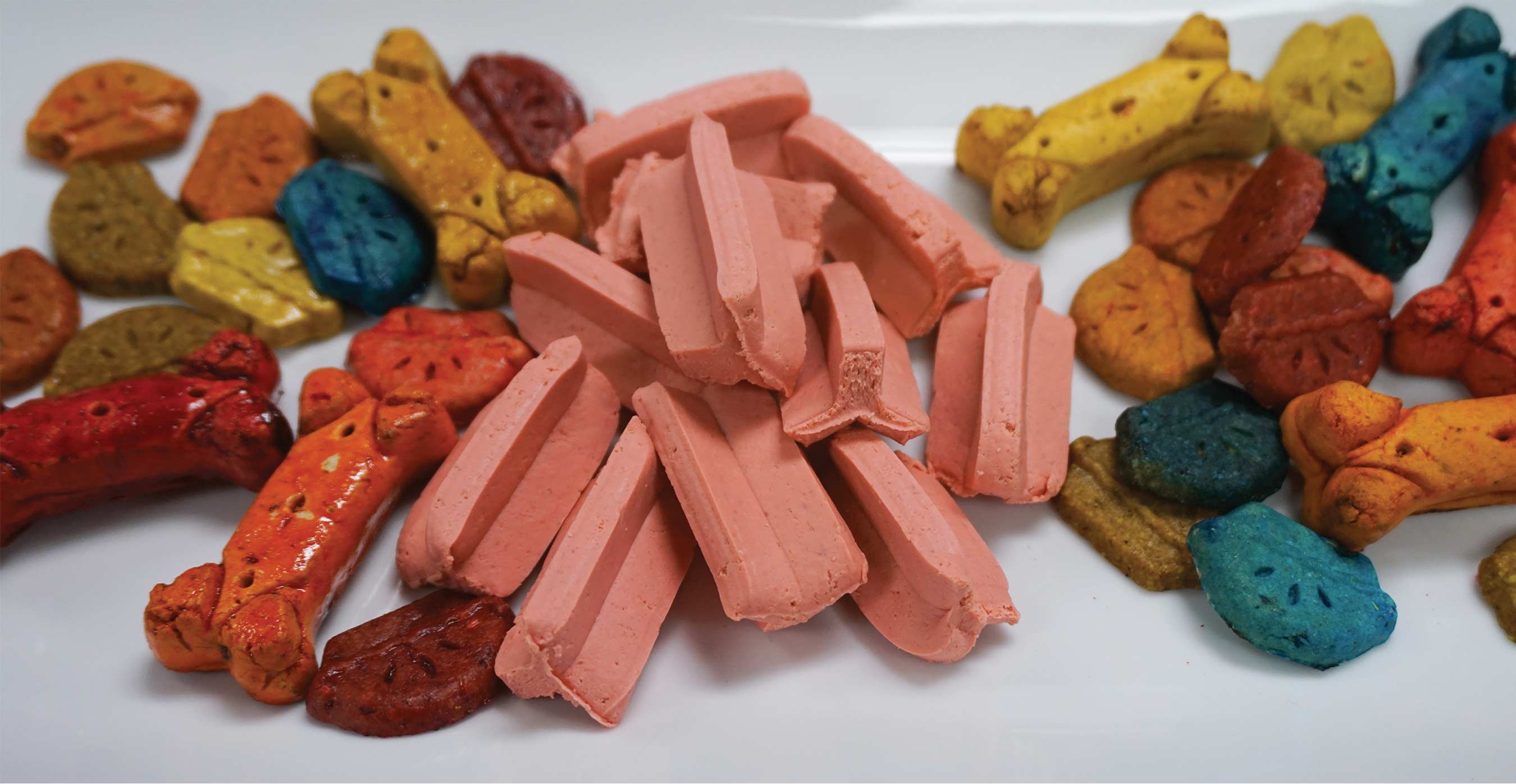
Where the company is today in terms of size is not information Hampshire shares. Annual volume will have to be left up to one’s imagination, but Hampshire’s management team does share details about its processing facility, including the number of processing lines it operates and some of its valued vendor relationships. The company operates a 291,000-sq.-ft. processing facility on nearly 18 acres in an industrial park near the intersection of I-44 and I-49 in the Southwest corner of Missouri. Hampshire currently produces more than 300 products on four processing lines.
The company mills nearly all incoming ingredients with a Bliss hammermill system to ensure uniform particle size. Hampshire sources flour from a vendor the company says has been an important partner from the beginning. “The original core group of employees who started Hampshire knew we would need a reliable source of flour,” Weaver says. “We partnered with Aguiar Ag Group (AAG) in Kansas City, a wholesaler of rice and wheat by-products. They took on the responsibility of procuring, delivering and maintaining inventory levels for Hampshire for the two types of flour that we were using at the time. AAG knew that our demand had peaks and valleys, as did the supply, so they flattened out the supply for us and stored it at their expense. They have been an amazing partner.”
Of Hampshire’s four processing lines, three are from Baker Perkins. The three baked treat lines include mixers from Shaffer, Urbana, Ohio, Baker Perkins rotary moulders and one 205-ft. and two 180-ft. Baker Perkins baking ovens, followed by dryers designed and built in-house by Hampshire.
The fourth processing line is a Vemag former/extruder system from Reiser, Canton, Massachusetts, which is used to make cold-formed treats. Hampshire extrudes and wire cuts cold-formed products such as meat sticks, filled treats and soft chews. Prior to extrusion on the Vemag, cold-formed products are blended and heated to lethality in a Seydelmann cooking mixer. “Cooking at a lower temperature preserves and improves the bioavailability of certain nutrients,” Dunlop says. “We can utilize this lower temperature process to offer more natural ingredients and keep those products stable on the shelf for a long period of time.”
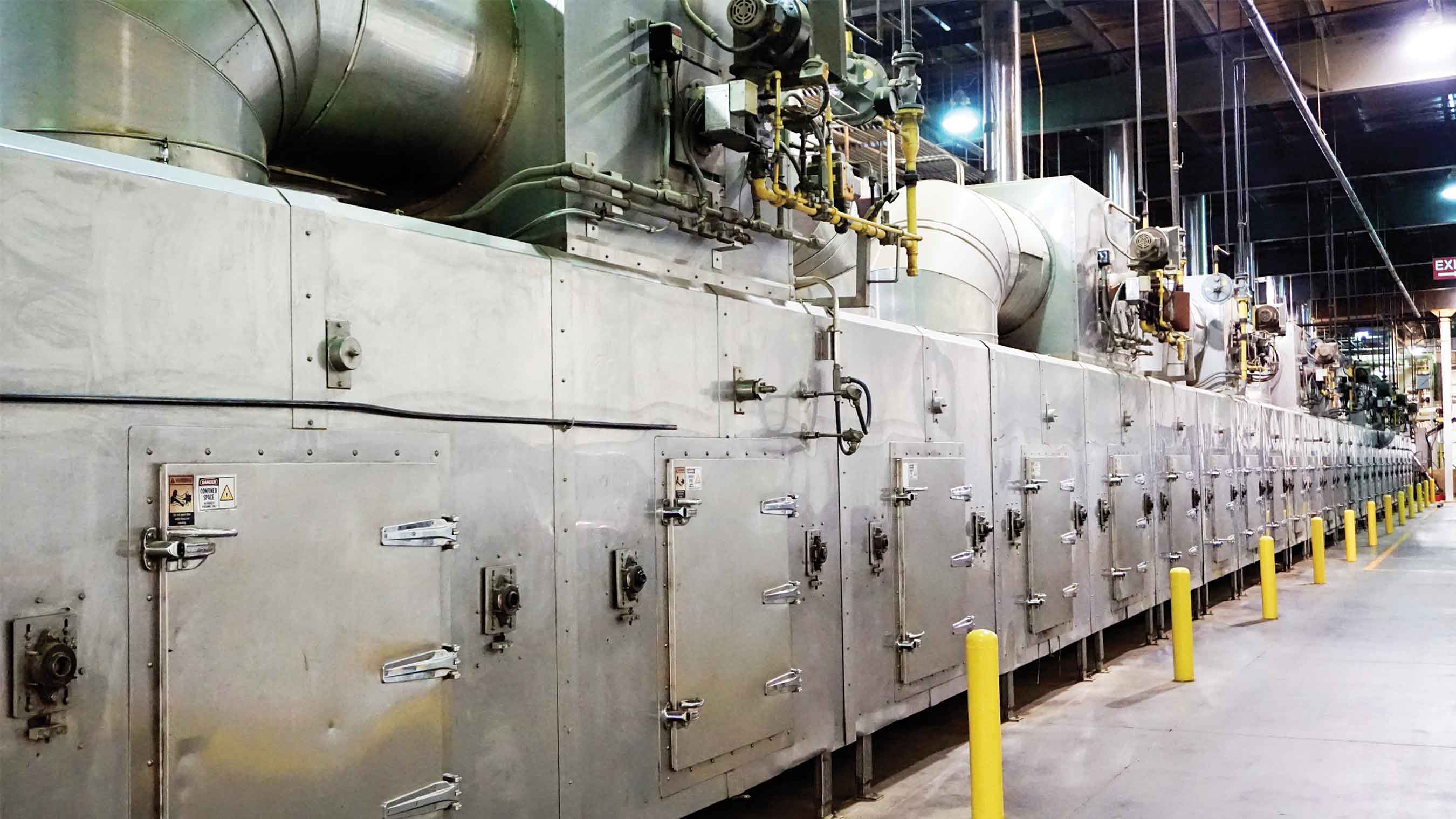
Homegrown creativity
In nearly every area of the plant, Hampshire uses homegrown ingenuity to either modify existing equipment or custom build processing or packaging equipment in house. “We’re very fortunate that our engineers and maintenance personnel have the skills needed to add custom features to our existing equipment or build something from scratch,” says Hill. “That allows us to be much more flexible. An example of that is we just had a new product with a new style of packaging for the market. We don’t know how successful this product will be and to purchase equipment specifically to package this product would take too long. Our engineer, Ralph Wakeley, modified equipment we had in-house and fabricated a solution. It’s not what the equipment was originally designed to do but with his creativity he was able to make it work.”
Joplin has a strong manufacturing base and low unemployment. To retain the talents of current Hampshire employees and attract new candidates, Ray says the company works hard to stay active in the community and engage employees within Hampshire. “The world record is something employees are very proud of and mention frequently,” Ray says. “We focus on team building events both inside and outside of work and have an employee recognition program that helps to recognize efforts at all levels in all departments.” With an average increase in employees of 10% per year, training must be ongoing and consistent. Hampshire has added a new online training database from Alchemy Systems, Austin, Texas. “Human safety is paramount in any manufacturing facility, but we really take it seriously,” Larson says. “We work with a safety consultant, conduct safety training and have safety teams made up of associates who conduct audits and tell us if there are any issues that need to be addressed or corrected.”
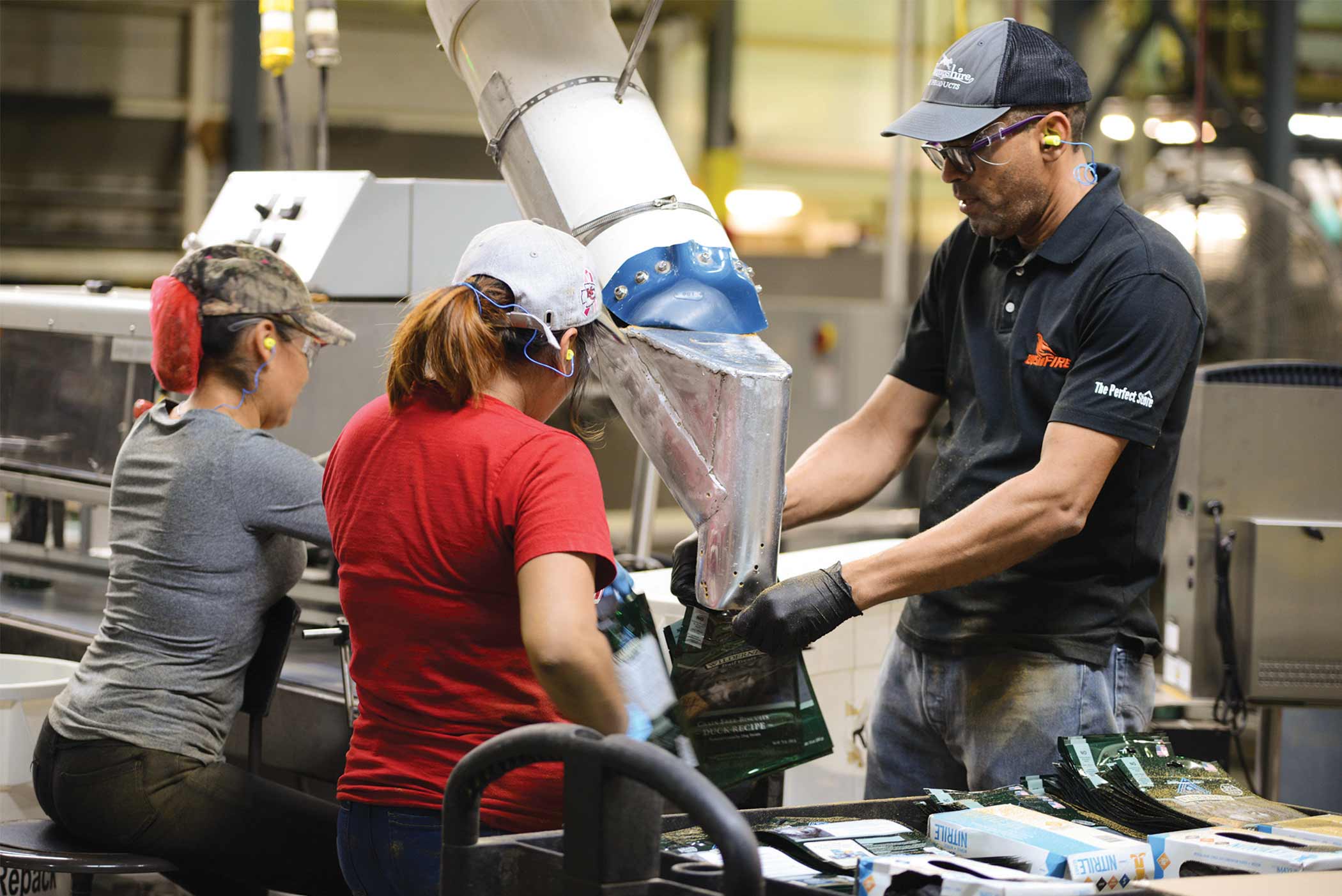
As part of the company’s quality and food safety program, Hampshire recently started utilizing a system to help the company move from art to science in the baking arena. With the SKALA system from Meter Group, Pullman, Washington, Hampshire is working to quantify and digitize the baking process to predict the outcome of each batch based on the initial inputs with the goal of giving operators the tools to quickly identify when action is required.
“We picked key processing indicators — water, temperature, water activity, moisture — and, using these indicators, the SKALA system will write algorithms for us to predict the batch outcome,” Dunlop explains. “We collect data at four points in the process and hopefully over time we will collect enough data to predict the outcome based on initial tests. We believe this will have a huge impact on our business and improve our ability to make it right the first time.” Hampshire expects the new data being collected will help identify the opportunity for gains in efficiency and opportunities for innovation as well. “It’s a huge opportunity for us to learn a lot more about our systems,” Dunlop says.
“The spirit of innovation is not just strictly on the side of product development and product creation, it’s also on the manufacturing process as well.” Julie Larson, president, Hampshire Pet Products
The spirit of innovation runs deep at Hampshire, but Larson says the company’s success depends on it. “The spirit of innovation is not just strictly on the side of product development and product creation, it’s also on the manufacturing process as well. It’s spread through all the different departments and looking for new and different ways to meet our customers’ needs because, when you’re a treat manufacturer, you’re not doing a full feeding diet, you’re not running long runs of the same diets week after week. When you have a portfolio of so many customers, it’s a very wide product base and they require us to be flexible. Customers change their treats often to keep them new and fresh. We’ve got to be flexible in our product offerings and we also must be looking ahead. While this is successful today, we need to continually be focusing on what is going to be successful for this customer tomorrow and having options for them to choose from so that they keep coming to us.”
